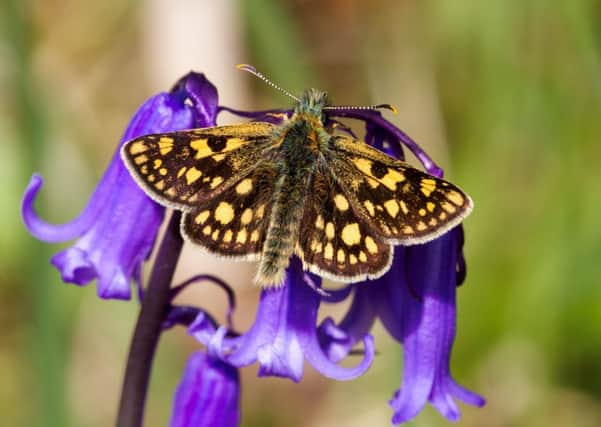Rare butterflies ‘thriving’ in Highlands


The entire UK population of the chequered skipper, which was last spotted south of the border in 1976, is believed to exist within a 30-mile radius of Fort William.
The region’s warm, damp summers and mild winters mean purple moor grass - the main food source for the caterpillars which turn to skippers - can flourish for a longer period than in other areas of the country.
Advertisement
Hide AdAdvertisement
Hide AdThis extra food supply in the Highlands allows the caterpillars to fully develop before hibernating for the winter. In other UK regions the plant withers too early to provide enough sustenance.
The distinctive butterfly, which has a wingspan of just 3cm, was first discovered in Scotland in 1939 at Loch Lochy and thought to be found at only around 20 sites.
But now a new study by the charity Butterfly Conservation Scotland and the Joint Nature Conservation Committee suggests the yellow-spotted butterfly may be more widespread than previously thought.
A recent survey shows populations of the insect may have been underestimated by as much as 80 per cent.
Dr Tom Prescott, senior conservation officer for Butterfly Conservation Scotland, said that while the insects are still only in a small part of Scotland they are “thicker on the ground” than previously believed.
Dr Prescott said: “The Chequered Skipper is a staggeringly beautiful little butterfly but it is very small and flies very rapidly, darting about.
“The survey has been a marvellous success and shows what can be achieved by encouraging the public to target survey effort to specific squares.
“It has also proved the worth of the model and that such an approach may be a useful technique to help determine the true distribution of other under-recorded species in Scotland.”